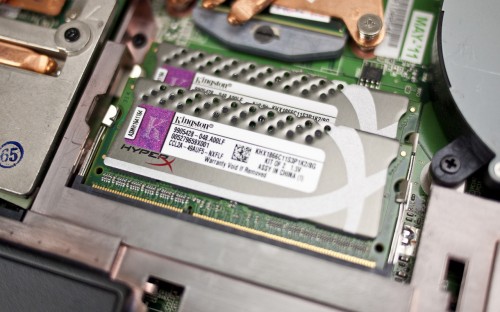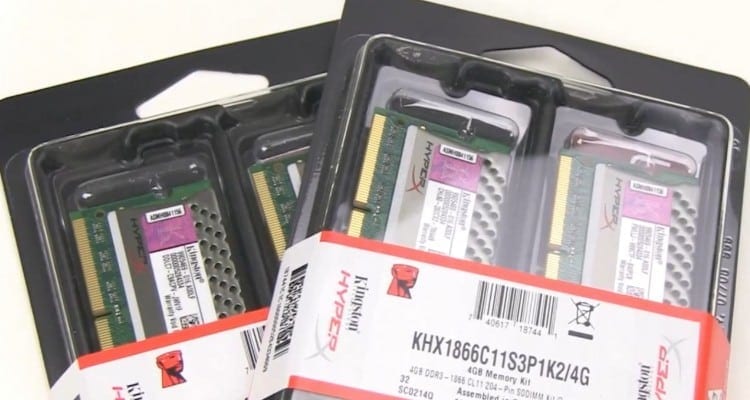Our latest video review (click the play button above) brings us face to face with a product that claims both a performance increase and ease of installation. We’ve heard both claims on many late night infomercials. However, this is one product that is no snake oil and as you see in the video above, Kingston’s new HyperX Plug and Play (PnP) 8GB DDR3 1866MHz Dual Channel SODIMM memory kit really does deliver on both promises. It definitely turned us from educated skeptics into believers, especially when it came to the benchmarks that don’t lie! (direct link)
Testing Notes
All tests were run at a resolution of 720p (1280×720) in all benchmarks using a brand new Lenovo T420s Notebook running Windows 7 64 bit Pro. In order to make this a fair fight, we removed the stock memory modules and used Kingston’s very own 1333MHz value RAM DDR3 8GB Dual Channel SODIMM kit. We ran all benchmarks with one DIMM, then two DIMMs for Dual Channel support. Then finally, we ran the 1866MHz Plug and Play kit.
Benchmarks included Cinebench 11.5, PCMark 7, and for games, we tested using SteetFighter IV and HAWX.
Final Thoughts and Conclusion

Kingston’s new HyperX Plug and Play (PnP) memory modules are both a shocker and a product that completely fulfills its advertising promise of being an easy drop in upgrade. On one hand, Kingston’s claims of performance increases are valid, despite what the conventional thinking (and testing) has been within the last couple years. We totally did not expect any performance increases from a simple increase in memory clock speed in gaming. We haven’t been able to show any benefits to high speed memory in gaming benchmarks for a very long time, whether it be on an INTEL or AMD platform. The role of the GPU has seemed to have taken that advantage away.
With the advent of more powerful Integrated Graphics Processors (IGP) like that of INTEL Sandy Bridge and of course AMD’s FUSION, the role of the high speed memory module has once again become relevant. These graphics solutions are becoming more versatile and powerful, offering casual gamers the opportunity to play without paying for it in terms of battery life. Based on our testing, it is clear that the IGPs benefit greatly from increased memory speed like the 1866MHz provided by our tested 8GB memory kit.
The other thing that Kingston has fulfilled their promises on is the relative ease in which you can drop in and upgrade your Sandy Bridge based notebook. There is no need to run a software utility, tweak BIOS, or overclock. The modules are programmed to immediately give you the advertised speeds out of the box and if you’ve played around with enthusiast memory on the desktop, then you’ll know how special this is.
At the end of the day though, you have to figure out for yourself whether or not the best possible performance is worth paying for. With a street price of around $149 US for the 8GB kit as tested, that’s an extremely steep premium to pay when regular 1333MHz 8GB kits can be had for less than half. But if you use applications that fully exploit the additional memory bandwidth that these modules provide, then they would be a substantial performance increase that is akin to a higher clocked CPU. But if you’re a gamer running a discrete GPU in your machine for gaming, then chances are, your mileage will definitely be a bit lower than if you were running an IGP.
Pros
- A true drop in, plug and play solution as advertised
- Provides substantial increases in performance when using an IGP in games
- Increases memory bandwidth significantly for applications that take advantage of it
- Attractive heat spreader design
Cons
- Substantial cost premium over lower clocked modules
- Much smaller performance increase in systems utilizing an IGP in games
Overall Rating: 9.0 / 10.0

Help Us Improve Our Reviews! Leave a Comment Below!

